Last Updated on October 14, 2023
The question of what is wayfinding signage is one that I often get asked.
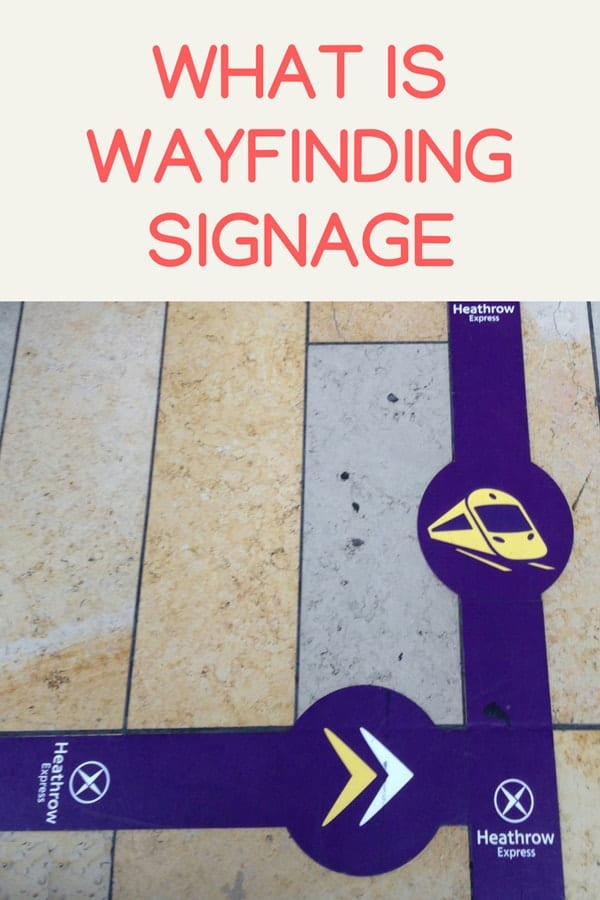
Is it different from other forms of signage? Well, wayfinding signage is concerned with helping to direct you from point to point, or confirming your progress along a route.
Wayfinding signage, in other words, is not advertising signage or informational signage such as a train’s arrival timetable. Let us delve deeper though, into this question below!
Table of Contents
Types of wayfinding signage
There are various forms of wayfinding signage that exists and the main categories are as follows:
- Directional – signage that tells you which way to go. An example of this is a fingerpost sign that points an arrow in a certain direction
- Confirmational – Confirms that you are on the right path or have arrived somewhere. Imagine, for example, a sign in an airport that says “Gate 20 – 5 minutes walk”. This is signage that tells you that you have a short walk to get to Gate 20. Not only does it give you an idea of the distance to go, but importantly, it lets you know that you ARE actually on the right path and heading towards the correct location.
- Informational – Signage such as FIDs (flight information displays) is another form of wayfinding signage in that they help to guide you through the provision of information. FIDs provide you with flight information and tell you which gate number or letter you need to head for. Informational signage can be important because they help to provide information vital to the route.
Common Wayfinding Signage Considerations and Issues
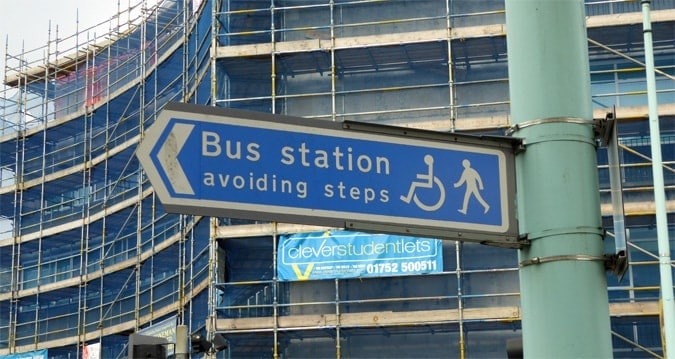
Disabilities and Signage
A key issue for the design and creation of wayfinding signage is the need to create it such that you are helping every possible user type.
This can make it both complex and challenging. Imagine, for example, if you create wayfinding signage that only provides visual guidance for people.
How will a blind person or person with visibility impairment find their way?
Two examples of helpful solutions can include signs at hand height, which include braille (such as at the entrance of a location). Secondly, and a more common approach, is to ensure that signage is large enough in terms of lettering to be visible from the different distances and such that the letters are readable by those with poor eye-sight. The use of background colours and lighting can aid the effectiveness of the signage.
Symonds (2019)
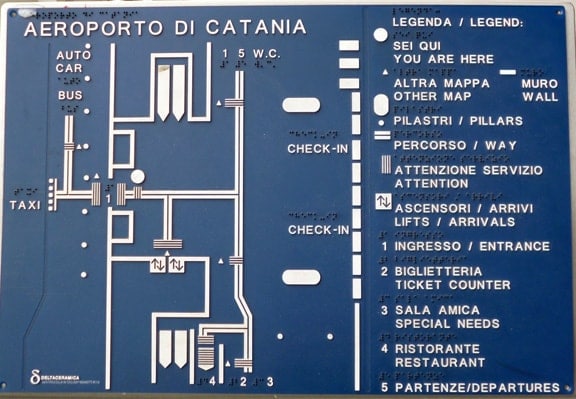
Signage Lighting
People need to find their way and lighting is very important when it comes to signage.
Signage needs to be readable in different lighting conditions and also in different weathers (f the signage is being used outdoors).
Back-lighting on signage and the way in which text on a sign is illuminated is an essential consideration.
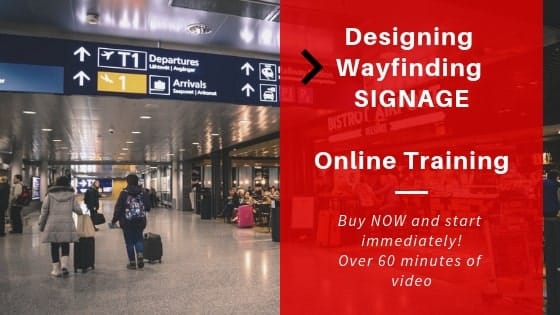
Language and Culture on Signage
Interpretation can be very different for different people because of language and cultural understandings.
One of the problems some locations have (especially in international airports) is that the local language may not be the language that the majority of the users speak.
You may be an airport in Holland with Dutch as the first language but with a majority of English speakers.
Trying to decide whether to use signage with two languages (which can make the signs hard to read) or in one language is something you will need to think about.
The use of images such as icons or pictographs is one solution, which can also be considered.
Make sure to use images or icons which are globally well known and also take time to consider if the pictures can be seen from a distance.
In the example below, the pictures of a man and woman cannot be seen from any distance because of the direction of the pictures. Only when you reach these toilet signs can you tell that they are there.
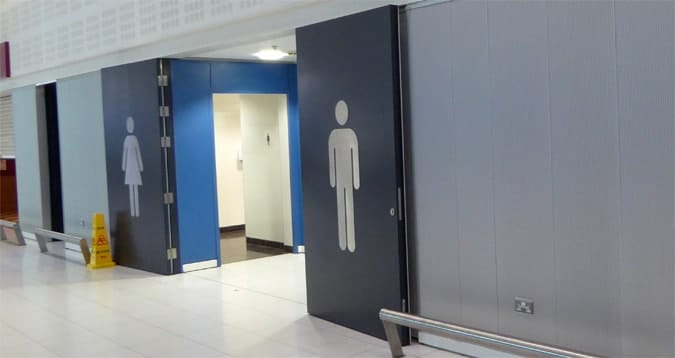
Signage Materials
When we ask, what is wayfinding signage, the choice of materials for wayfinding signage is an important one and you need to think about.
Are the signs placed indoors or outdoors?
The signage will need to be weather resistant and much more durable if it will be outdoors.
Think also about if you will need to change the signage very often because this will also affect your choice of materials.

Further Resources
Dr Paul Symonds has a PhD in Wayfinding from Cardiff Metropolitan University in the UK. Paul works with the signage industry, airports and other locations providing wayfinding audits, consultancy and training.


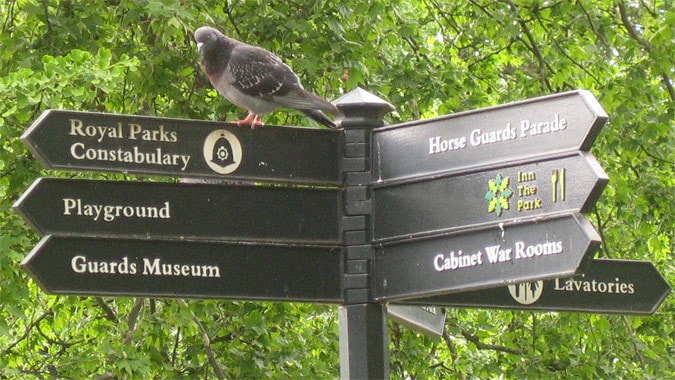






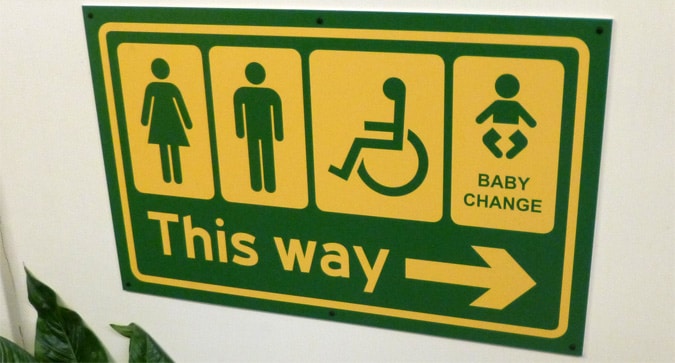


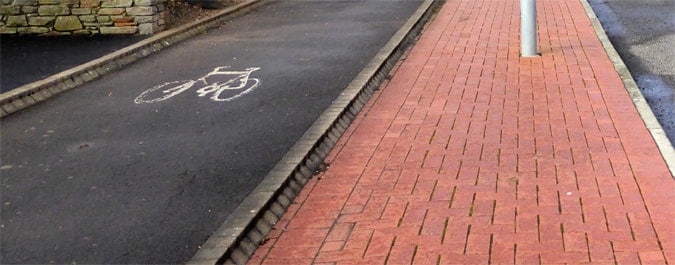
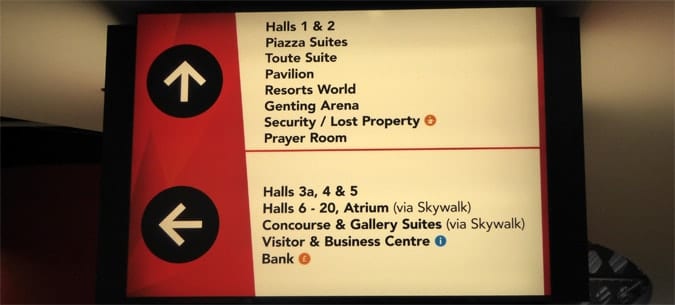
I liked the Content, Its good to see that someone explained Wayfinding signages in details. Well, I am from Jyoti Display Pvt Ltd. and We serve Wayfinding Signage system in India. Do check the Website link and share me your review on our mail id.
Thank you Suraj. Good luck with your wayfinding signage systems there in India. Let me know if any questions.
This is really helping for my final project. Do you have any journal references which I can cite the sources?
Hi Fauzan. Yes, You could read my PhD and other publications and grab some references.
I’m a MSc. Student of Architecture, currently designing national gallery of art and culture as my semester project, I want to to choose way finding as a sub-topic, please I need your help on application of way finding in Architectural design so as to apply it in the design of the gallery.